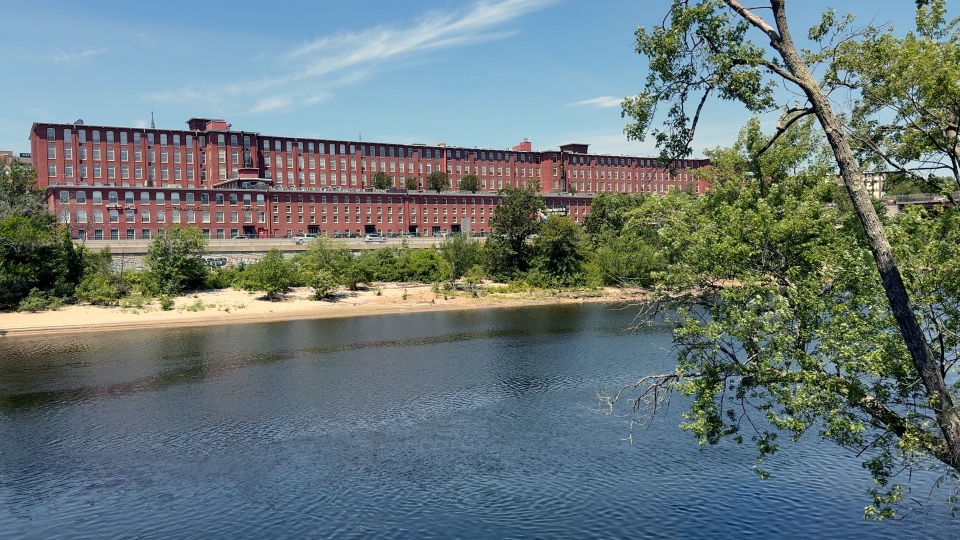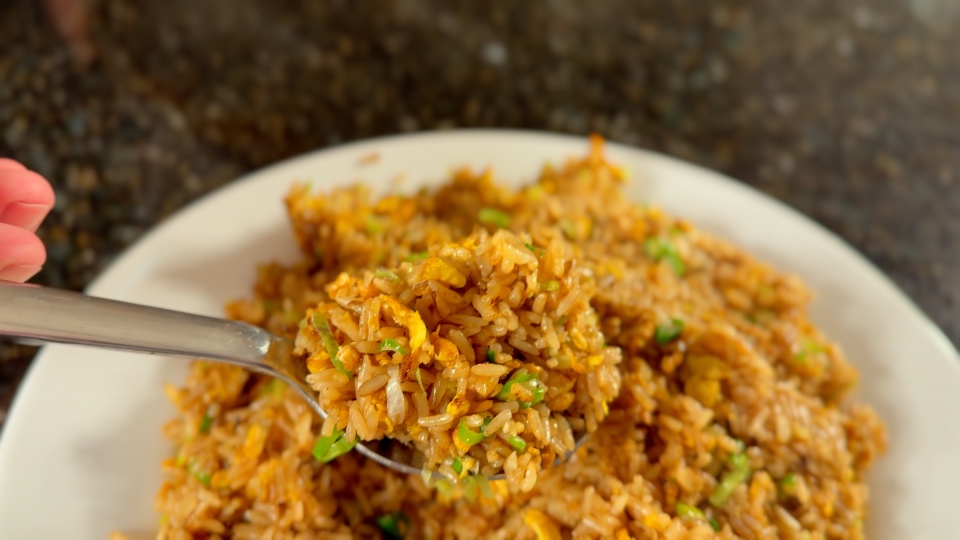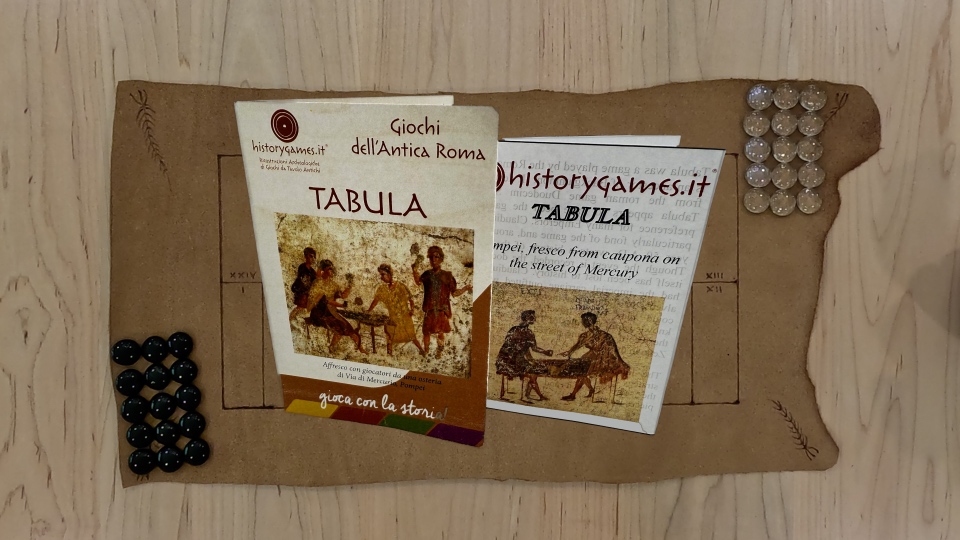Matera, Bari and Abruzzo
Leaving behind Rome, Naples and Amalfi we traveled inland to Basilicata, the arch of the Italian boot. We spent two nights sleeping in the caves of the Sassi di Matera, then headed east to Bari where we learned to make Orecchiette and Focaccia Barese. We made our way up along the Adriatic coast to the mountains of Abruzzo and the small villages of this remarkable region impacted by depopulation and a devastating 2009 earthquake.
Deep in the South of Italy, Matera first came into view for us from it's modern side. Driving in the old part of town is restricted, so many of the hotels partner with parking garages and shuttles. Once in the Sassi, we were transported back in time. The Sassi di Matera are a UNESCO World Heritage Site and strictly regulated to preserve the unique architecture and character of the ancient cave dwellings.
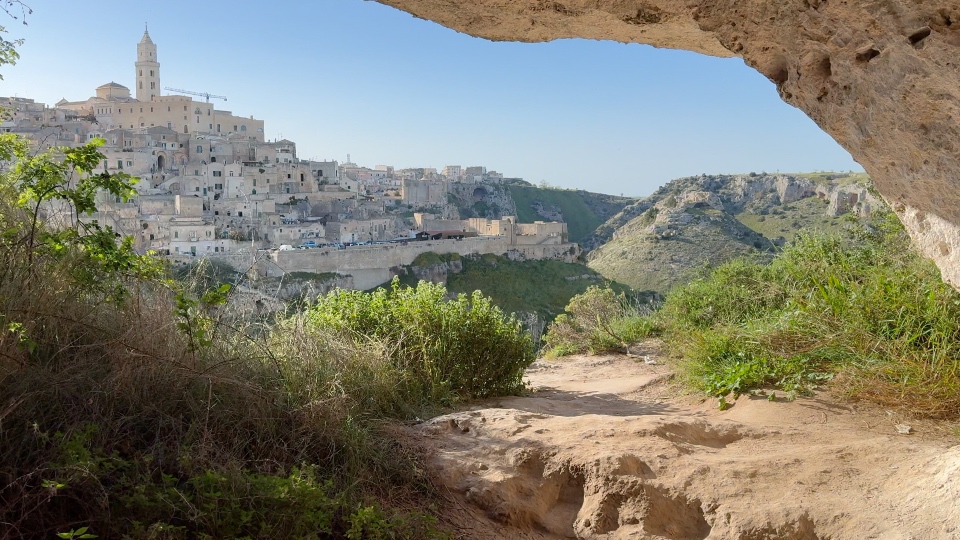
We stayed with Sextantio Le Grotte Della Civita which manages 18 rooms in traditional cave dwellings in the oldest part of the Sassi. A deconsecrated church serves as a common space where food is served. During the day the town was flooded with day-trippers, but staying in the Sassi itself was unforgettable with quiet mornings and evenings surrounded by stone, wood and the Southern Italian sky. This was one place where the choice of accommodation truly mattered. Two nights was just right for us.
Sextantio Le Grotte Della Civita (External Link)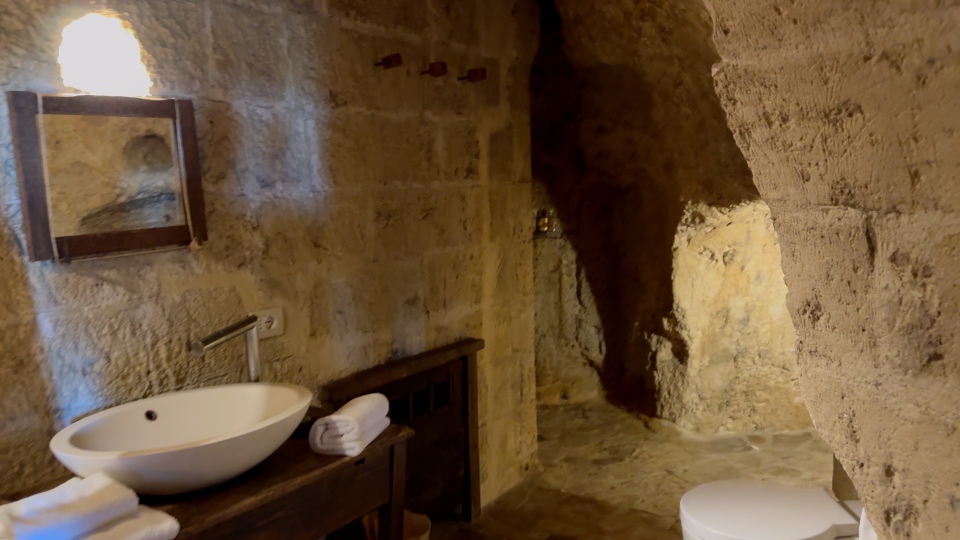
Breakfast offerings in the cave church were mostly from a local organic farm supplemented with fresh cut fruit and cappuccino. The spread both mornings was impressive, and the ambiance unbeatable. Don't miss the afternoon snacks such as Peperone Crusco and Paper Shell Almonds.
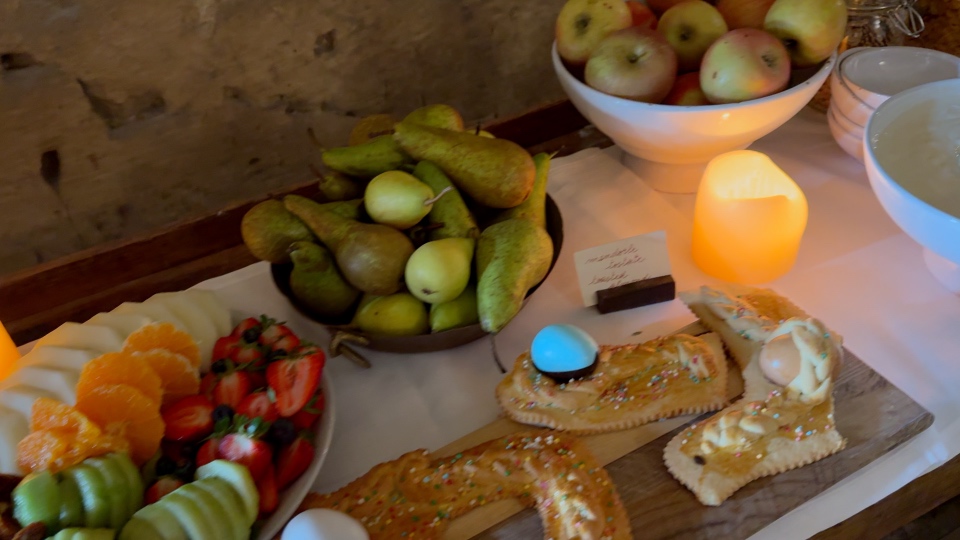
Most of the lunches and dinners we had were unremarkable with hit or miss sensation. An exception was Michelin Starred Vitantonio Lombardo Ristorante in the Sassi. The chef was imaginative, with many dishes telling a story that we consumed. Roasted Artichoke with Squid and Pork, Mint and Liquorice was a favorite along with I dropped the Egg in the Garden and Pizza in Black. This was our last Michelin meal of the trip.
Vitantonio Lombardo Ristorante Civita (External Link)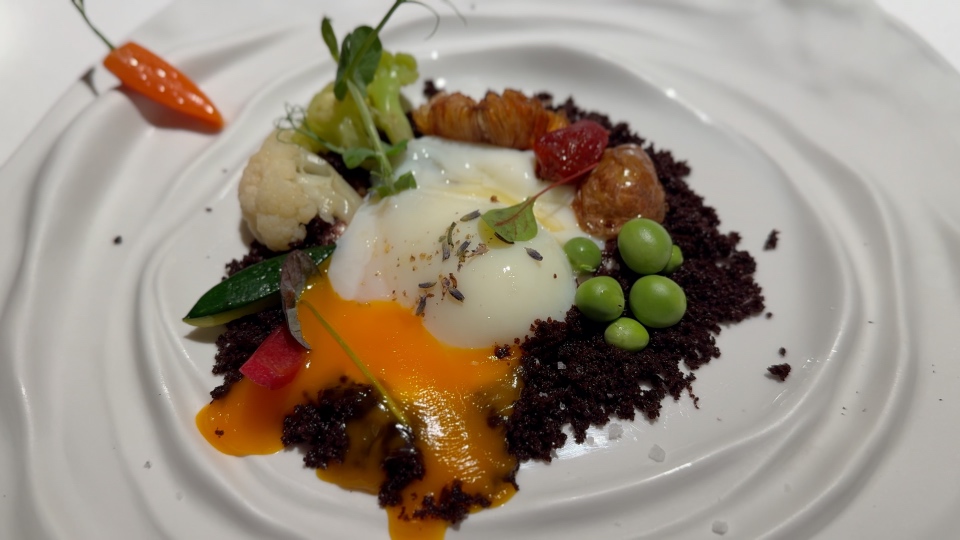
After a couple nights in Matera we made the short drive to Bari on the Adriatic Coast. Many people use Bari as a central place to stay when vacationing in the Puglia Region. We visited for Bari itself eager to try it's cuisine and walk the beautiful old town and waterfront.
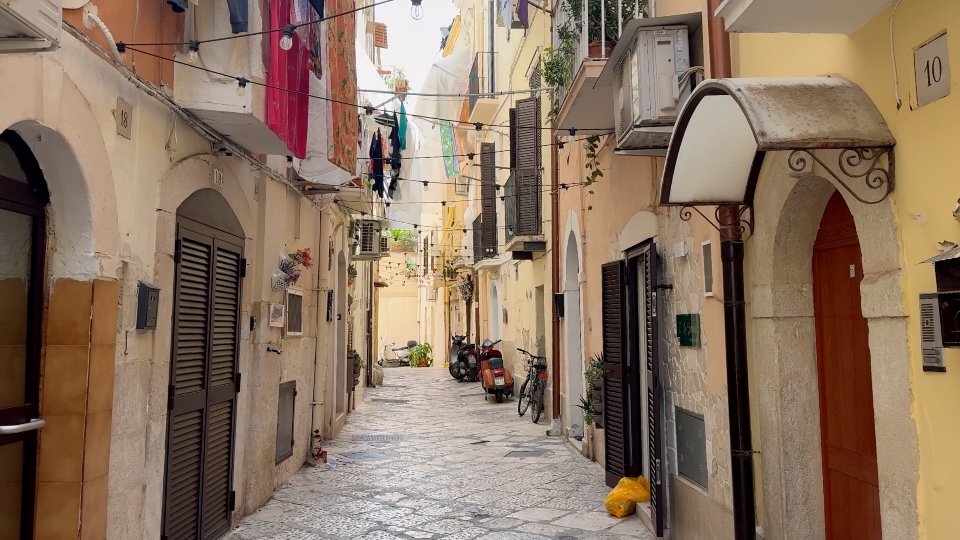
In some ways Bari has a Southern California coastal feel. The layout is large and flat with palm trees, intersecting autostradas and good food. It was noticeably less expensive to the other cities we visited.
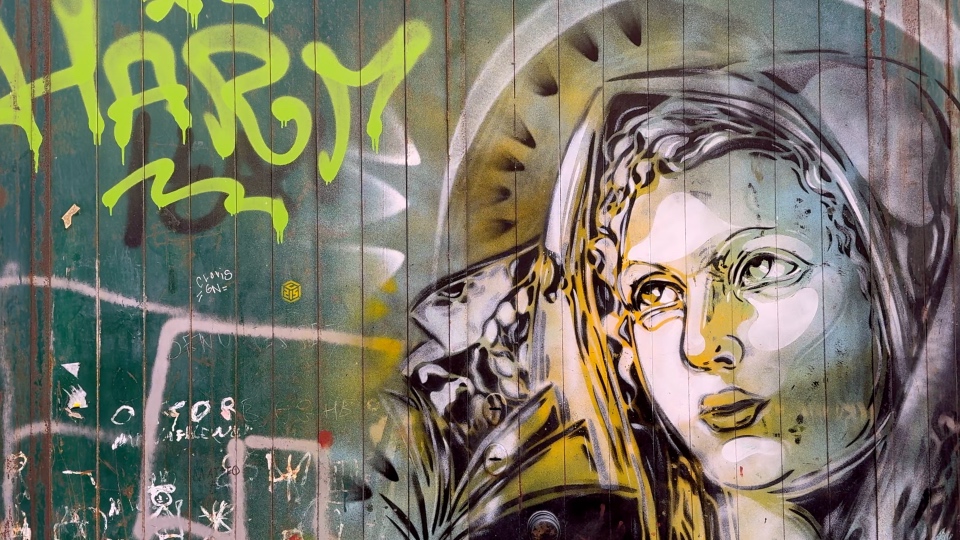
The Nonnas making Orecchiette in the streets on Arco Basso are a tourist destination and a must see to witness their skill. Buy some if you hang around and watch, but make sure it is fully dried if you plan to pack it for the flight home. Wet pasta sealed in plastic at room temperature will quickly ferment and go bad.
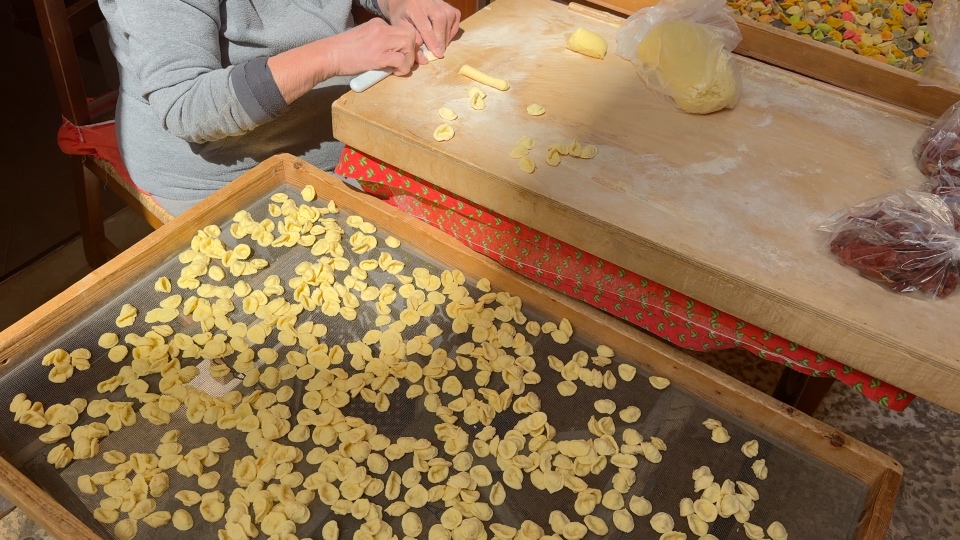
Bari has its own Focaccia that is round and covered with olives, tomatoes and oregano. Some bakeries serve a thick and fluffy focaccia while others are thin, light and crispy. We enjoyed the thinner variants. One evening we booked a private cooking lesson with a Bari local who taught us how to make Focaccia Barese and Orecchiette. This was a highlight of our trip and we plan to share these lessons in the coming months!
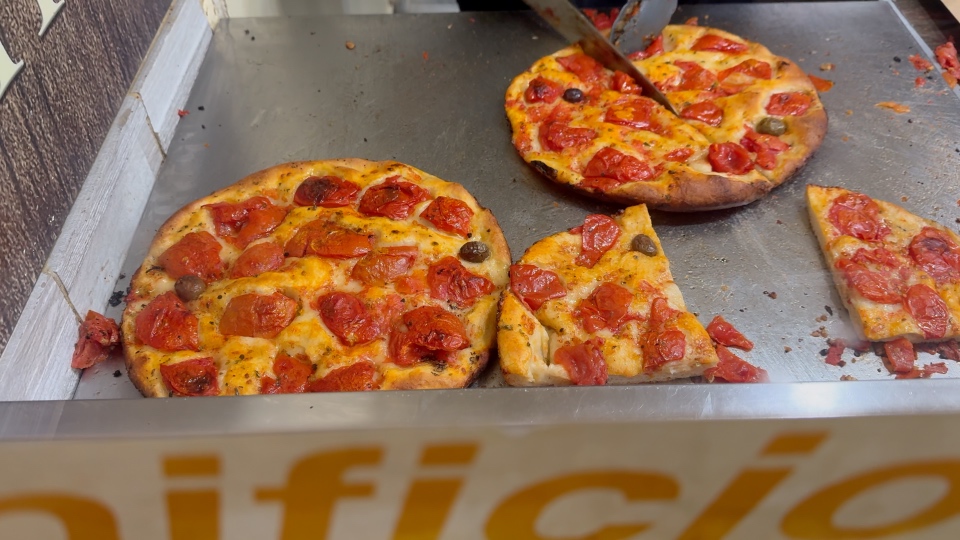
Spaghetti all'Assassina is a specialty of Bari consisting of pasta cooked in a tomato broth until it has absorbed the liquid and begins to fry in the pan to a dark caramelized mahogony. Traditionally the dish is cooked without stirring, and it is said only a murderer has the nerves to do it without burning dinner. Urban L'Assassineria Urbana is built around this one dish, and while they may not strictly follow the original technique, the results are undeniably tasty. We found the dining room a little too industrial, but the drinks were cold and the pasta perfect.
Urban L'Assassineria Urbana (External Link)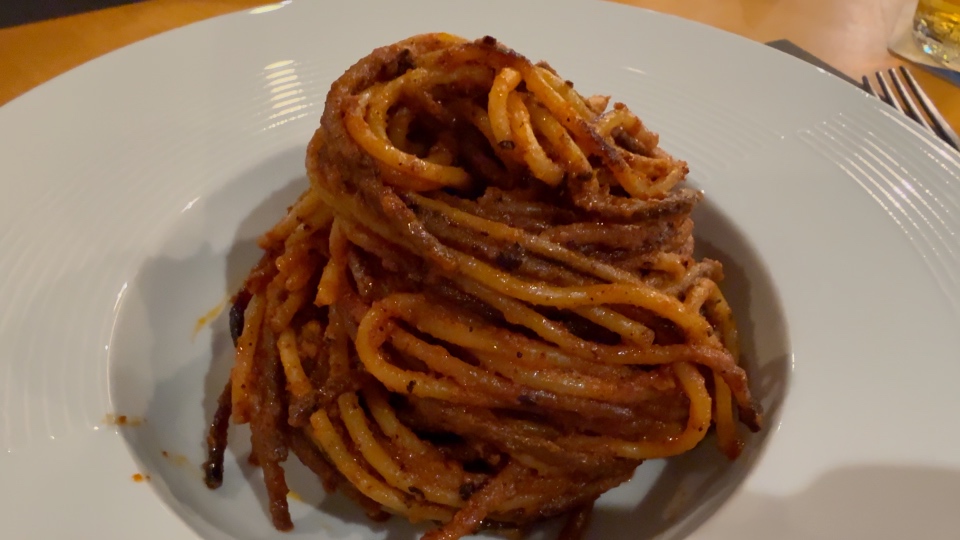
From Bari we headed North into the mountains of Abruzzo where we stayed in Sextantio's original Albergo Diffuso property in Santo Stefano Di Sessanio. This small village was heavily impacted by both depopulation and a 2009 earthquake. A wealthy investor decided to save as much as he could though the conversion of old homes into visitor accommodations and the preservation of old crafts and trades through tourist experiences. The town felt as though it was on life support, but it offered an interesting base to explore the nearby hills, valleys and villages.
Sextantio Albergo Diffuso (External Link)
A roughly 10-mile loop hike from Santo Stefano brought us to an old stone fortress perched atop a hill above Calascio. This walk was beautiful, and provided us with Amazing views to remember Abruzzo by.
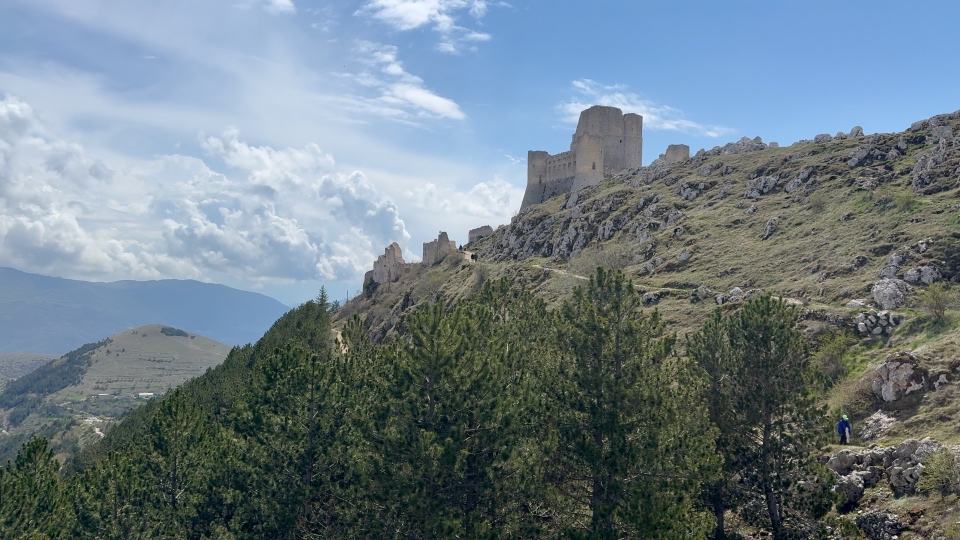
Just below Rocca Calascio we found a hotel and restaurant named Rifugio Della Rocca. The pastas were second to none, and the red Abruzzese wine was delicious. An afternoon thunderstorm passed through which we enjoyed through a small window at our table.
Rifugio Della Rocca (External Link)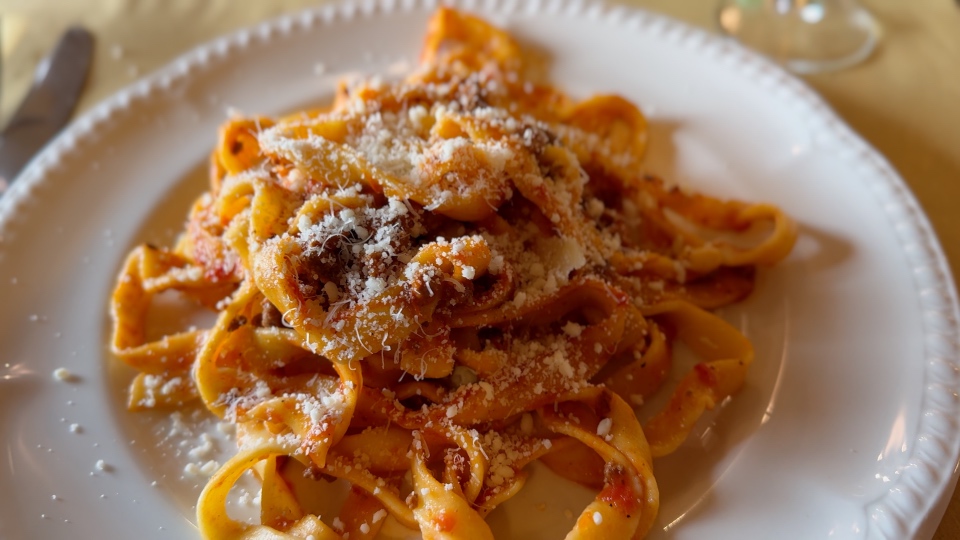
The cantina or cellar of our hotel featured a bar that served tea, wine and coffee. They also had small bites and a wonderfully hearty soup made from lentils specific to the Santo Stefano area. We had the place to ourselves for a few hours on our last day as we relaxed and reflected on our experiences together in Southern Italy.
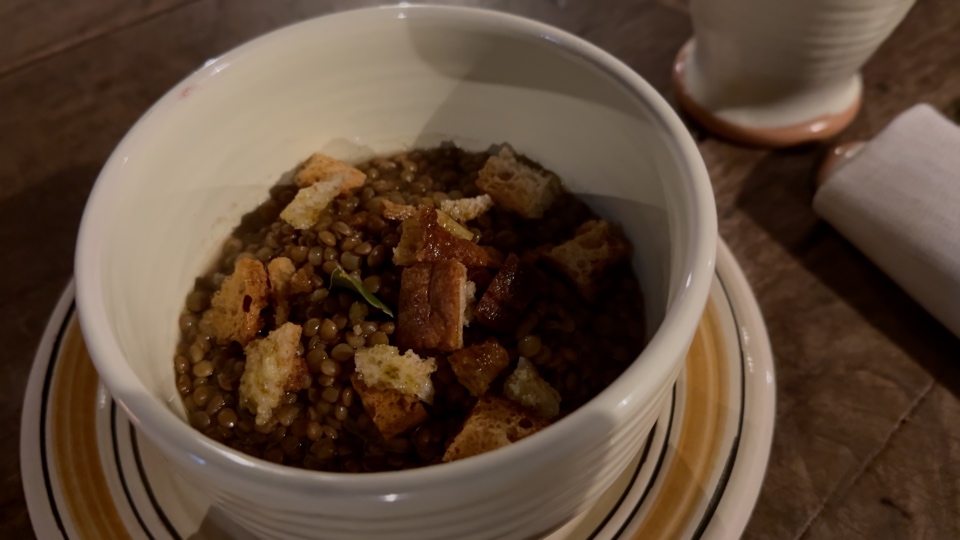
Valuables were locked away and on display in the cantina including wine, cheese, meats and preserves.
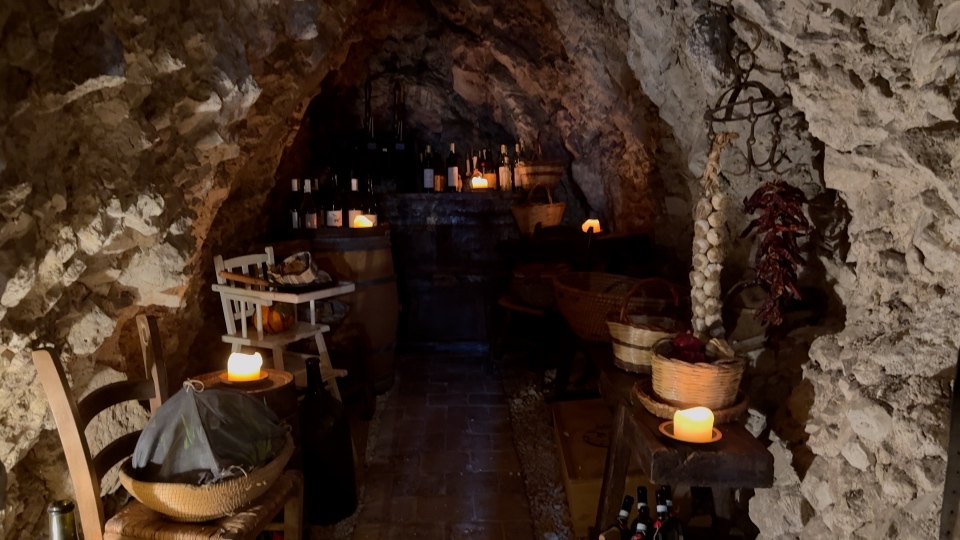
Travel within the Southern Italian regions of Basilicata, Puglia and Abruzzo was very different from the tourist trails of Rome, Naples and Amalfi. The pace was slower, and we appreciated this quality on the back-half of our trip. We decided on visiting these less-frequented destinations to get a better feel of Southern Italy rather than race North to Florence, Venice and the Dolomites. Returning to give the North its due attention is on our short list. Thanks for joining us, and we look forward to the next adventure!

Copyright © 2024 - 2025 Purpose Circus
